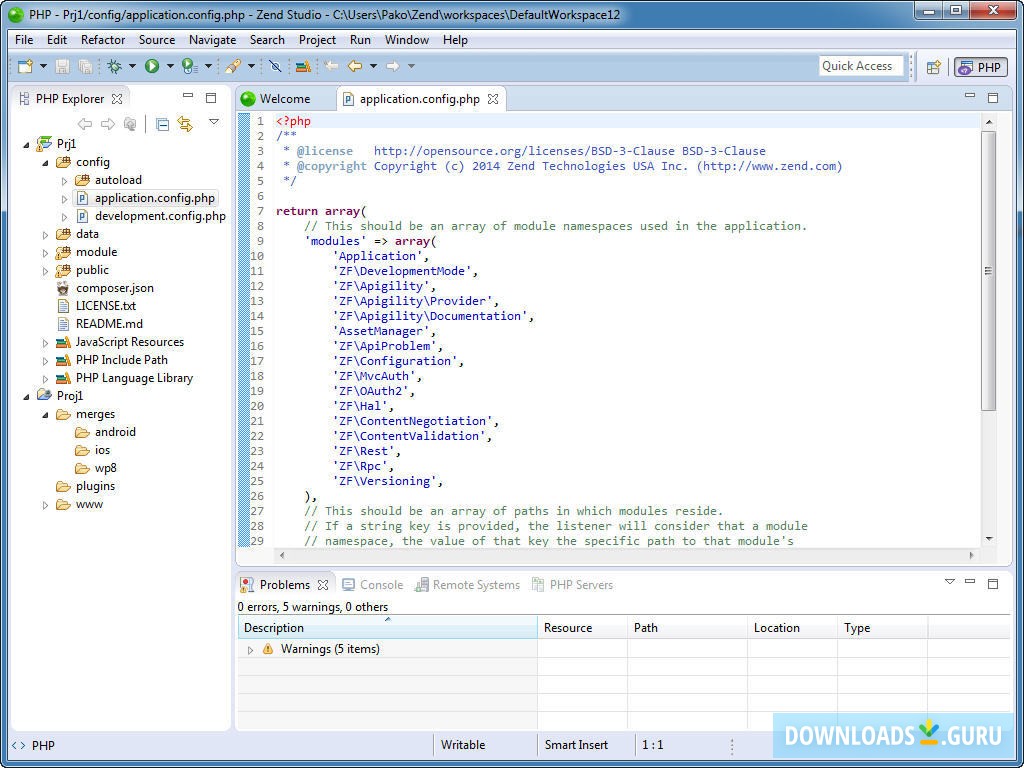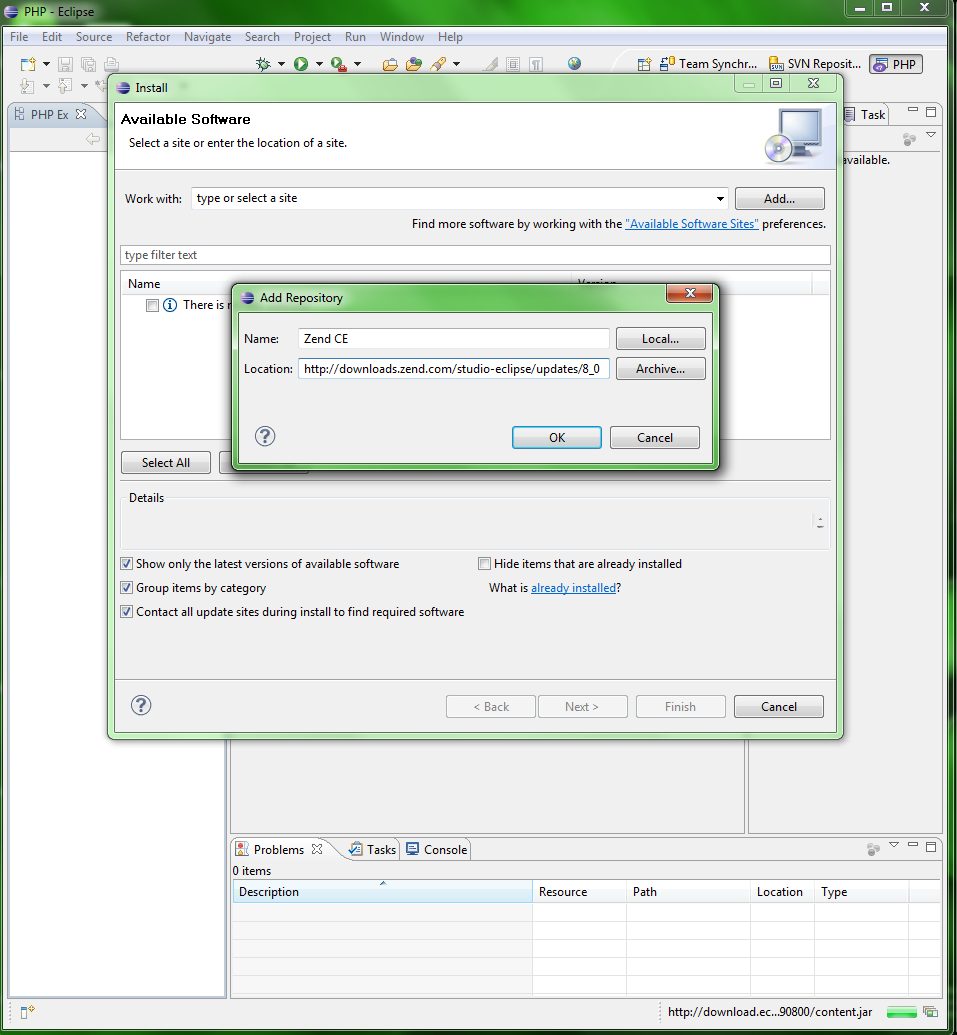

As another example, you can set the tabs that are on the top of the code editor to move to the bottom of the view if you prefer by selecting Bottom instead of Top in the Editor tab position. If you don't like this presentation, change it back to the default in the preferences window. The perspective toolbar switches to a vertical orientation on the left side of the IDE, and other views are opened for you.

If you change this to another option, Eclipse 2.1, and apply the changes, you see a totally different layout or presentation to the overall IDE. The first option here simply allows you to select what I call a master perspective, or as Zend describes it, a presentation. If you click on the tree listing on the left side of this General Preferences window and select the Appearance item, you are given a host of options that, oddly enough, have an effect on the overall appearance of the Zend Studio for Eclipse IDE. Also, within the Single Click option, you can control the hover action or the use of the arrow keys within that context. Choosing one of these options simply means that anywhere within the Zend Studio for Eclipse environment if you are selecting an item, you can either double-click or single-click on it. Within the General Preferences window, the section labeled Open Mode in the lower half of the screen includes the options Double Click and Single Click. It also shows an icon that allows you to perform garbage collection. This indicator generally shows up in the bottom-right side of the display on the status bar.

Show Heap Status-This option turns on an indicator that shows how much Java Heap memory is being used by Zend Studio for Eclipse.See the following note for a brief description on cycling. When it is not selected, the dialog disappears. Keep Next/Previous Editor, View and Perspectives Dialog Open-When this option is turned on, the Selection dialog for Editor, View, and Perspective Cycling stays open.Always Run in Background-When this option is checked, the developer can continue working while longer running processes are executed in the background.Here, you are offered three checkbox controls and an Open Mode for item selections within the IDE. With the highlight on the first item, named General, you can see the initial control area, as shown in Figure 3.5. General preferences are exactly that-preferences to the overall environment of the Zend Studio for Eclipse IDE. Some are of a general nature that can affect the overall environment and some are more specific to a certain aspect of the IDE. In the following sections you will learn about much of the systemwide preferences that can be controlled in this IDE. We deal with all other preference settings that may be adjusted depending on a certain topic inside that specific context. Throughout the remainder of this chapter, we first discuss systemwide preferences and provide some detailed examples of them and then describe some specific preferences that affect how PHP is handled within Zend Studio for Eclipse itself. We guide you through most of these options in this chapter, but we merely mention some of these differences as such. Some preferences have systemwide ramifications and some are quite specific to a certain topic or process. However, it's not too difficult to back yourself out of any corners that you may find yourself in.īefore we get too close to the details of the preferences, here are just a few words about the nature of the preferences. If you're not careful, you can get yourself into some trouble using this option. Under the Window menu, there is an item that opens up this Pandora's box of options: Preferences, located at the bottom of the menu displayed when you select Window. Zend Studio for Eclipse is no exception however, there are some differences between the Zend Studio for Eclipse product layer itself and the Eclipse foundation on which it is built.
Zend studio for eclipse software#
Learn More Buy Zend Studio for Eclipse PreferencesĪs with any major software product, you would expect to be able to have some sort of master control over its performance and look and behavior. Zend Studio for Eclipse Developer's Guide


 0 kommentar(er)
0 kommentar(er)
